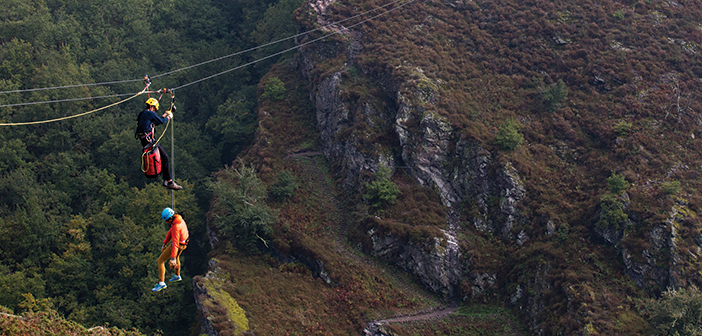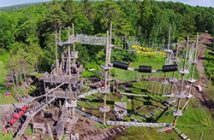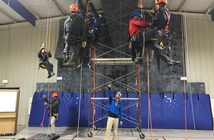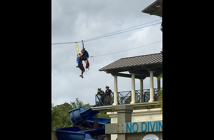Williams concurs with McCurley. “Often- times when we get into this, we see it from a work place point of view,” he notes. “Every employer has a responsibility to train and protect their employees. But there’s no less of a duty to paying customers. You’ve got systems in place to rescue an employee, and it’s a similar situation to managing hazards for a guest.” And that helps simplify a park’s planning.
“The legal requirements are different, but you can use the same techniques to rescue both employees or guests,” agrees Kirk.
Once you assess the risks and develop a plan to deal with them, it’s time to equip and train staff for the potential tasks and emergencies they will face.
TRAINING
Equipment manufacturers and zip line installation companies will have their own recommended training protocols, regimes and frequencies, and they can help operators establish appropriate training programs. But ultimately, it is up to each individual operator to set a training schedule and documentation process. Training through the ACCT or PRCA will meet OSHA and/or ANSI (American National Standards Institute) standards. Under OSHA laws, employers must provide the proper equipment and training to new employees.
“We [Petzl] manufacture our equipment to standards and we’re clear about how it should be applied. We would rather push the training and the system than the individual product, like the JAG rescue kit, for example. We propose a solution, but it’s up to the individual operator to decide if they want to introduce it,” Williams says.
Whatever systems and equipment are put into use, “Operators should regularly practice different ways to rig things, so it should never be a hassle,” says Williams. A lot of people in the industry have done it for a long time and they’re aware of a lot of methods, he adds.
“A skilled operator will have a deep bag of tricks,” Williams points out.
“Generally, staff, as employees, should have an authorized fall protection awareness suitable for their authorized user level. Then, for rescue, we train to the authorized rescuer level under the fall protection standard,” says Kirk. Typically, that’s a two-day course.
“I would encourage every operator to have at least their lead employees trained as rope access technicians, and to have at least BLS medical capability,” McCurley suggests. “In addition, anytime an emergency response is initiated internally, local emergency services should be called. It is easy to stand-down a response if it is not needed, but if the call is delayed and ends up being needed, the result can be catastrophic.”
The frequency and depth of training is a critical component of any plan, says ZipRescue inventor and owner Eric Cylvick. “Rescuers need to train consistently and it has to be documented,” he says. “They have to try and think of every scenario they may encounter, including the worst possible scenarios that could happen—heart attack, spinal injury, trolley seizes up on the cable—and train through those scenarios.” As someone who coordinated lift evacuation training at Park City Mountain Resort for 14 years as director of snow safety and the inventor of the ZipRider, Cylvick speaks from long experience.
Regardless of whom your operators are trained through, the most important thing is to start with a plan and practice it often. Once an incident occurs, it’s all about putting the plan you trained for into practice.
ASSESSING AN EMERGENCY
In the event of an emergency rescue situation, you have to ask two general questions, says Williams. First, determine if the stranded guest or employee is capable of assisting in his or her own evacuation. Is he or she injured, and what is his or her physical and mental capacity, “and how reliable is that capacity?” he says.
In Williams’ courses at the Petzl training facility, operators study how to negotiate a variety of evacuation scenarios. For example, what is the clearance—the vertical distance to the ground or a safe zone, or the horizontal distance between anchor and access points, such as a tower? The angle or pitch of the cable is often a limiting factor in whether a patient can be hauled, and affects the amount of security an operator needs to access them.
Is there a safe landing zone the patient can be lowered to? And lastly, how many patients are there? At what point does speed of evacuation start to become a factor? All of this evaluation is part of the decision-making, or triage, on the part of the rescuer.






